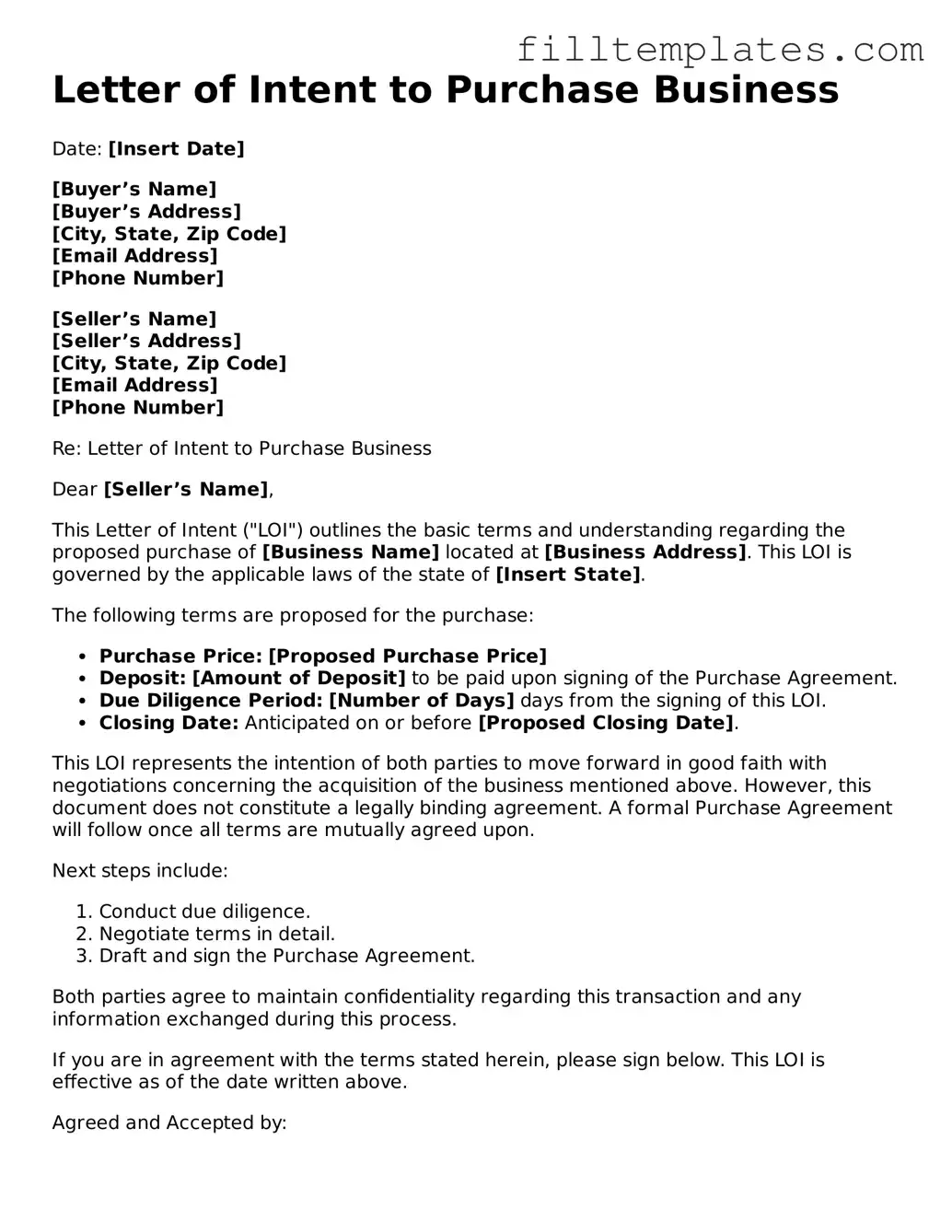Letter of Intent to Purchase Business
Date: [Insert Date]
[Buyer’s Name]
[Buyer’s Address]
[City, State, Zip Code]
[Email Address]
[Phone Number]
[Seller’s Name]
[Seller’s Address]
[City, State, Zip Code]
[Email Address]
[Phone Number]
Re: Letter of Intent to Purchase Business
Dear [Seller’s Name],
This Letter of Intent ("LOI") outlines the basic terms and understanding regarding the proposed purchase of [Business Name] located at [Business Address]. This LOI is governed by the applicable laws of the state of [Insert State].
The following terms are proposed for the purchase:
- Purchase Price: [Proposed Purchase Price]
- Deposit: [Amount of Deposit] to be paid upon signing of the Purchase Agreement.
- Due Diligence Period: [Number of Days] days from the signing of this LOI.
- Closing Date: Anticipated on or before [Proposed Closing Date].
This LOI represents the intention of both parties to move forward in good faith with negotiations concerning the acquisition of the business mentioned above. However, this document does not constitute a legally binding agreement. A formal Purchase Agreement will follow once all terms are mutually agreed upon.
Next steps include:
- Conduct due diligence.
- Negotiate terms in detail.
- Draft and sign the Purchase Agreement.
Both parties agree to maintain confidentiality regarding this transaction and any information exchanged during this process.
If you are in agreement with the terms stated herein, please sign below. This LOI is effective as of the date written above.
Agreed and Accepted by:
______________________________
Buyer’s Signature
[Buyer’s Name]
______________________________
Seller’s Signature
[Seller’s Name]
